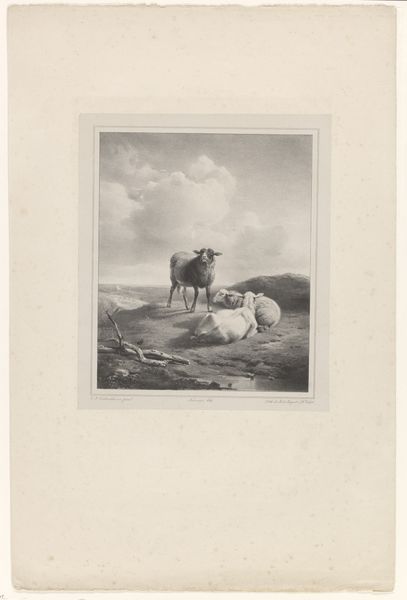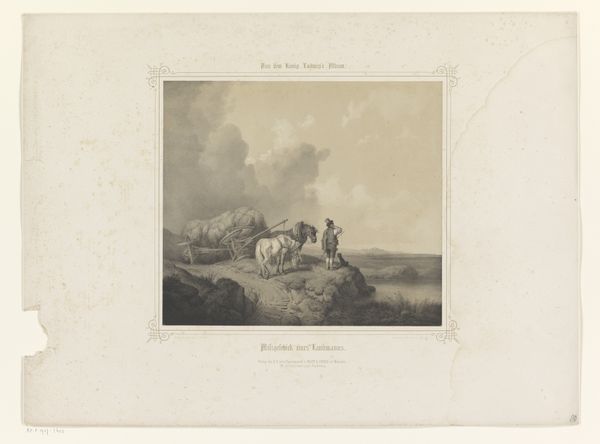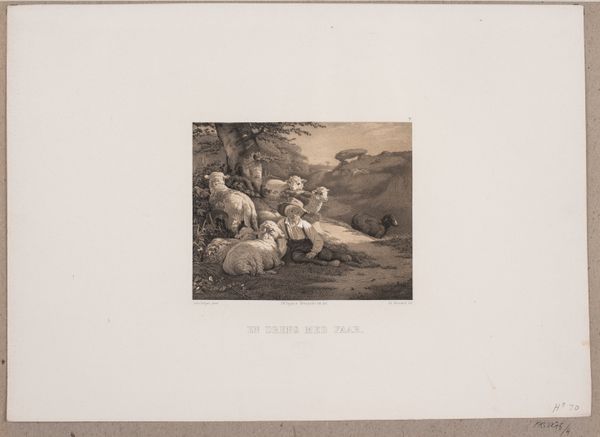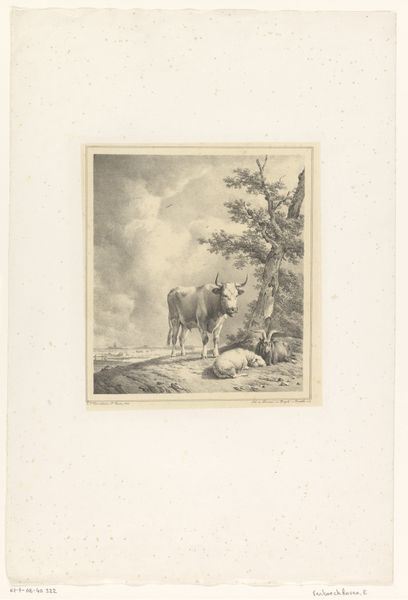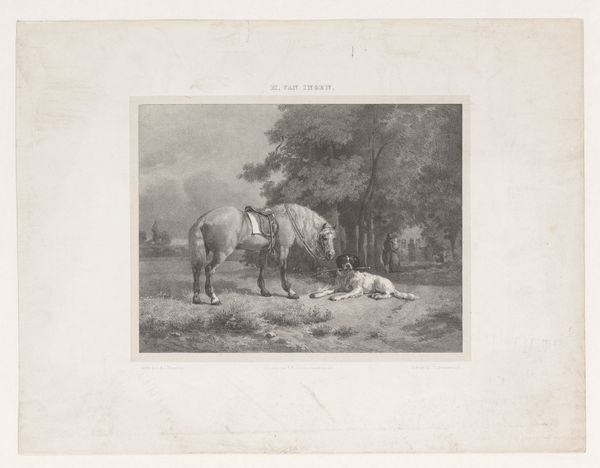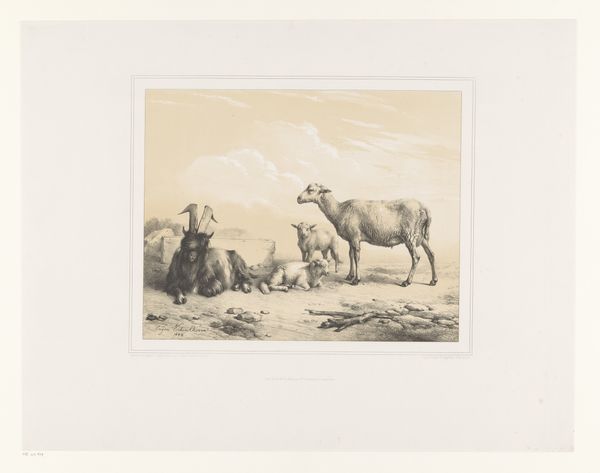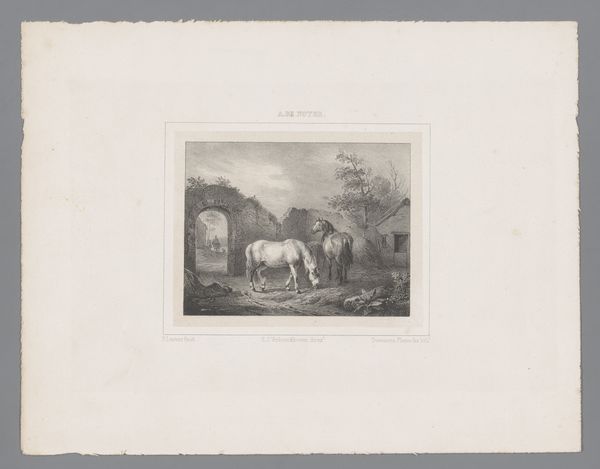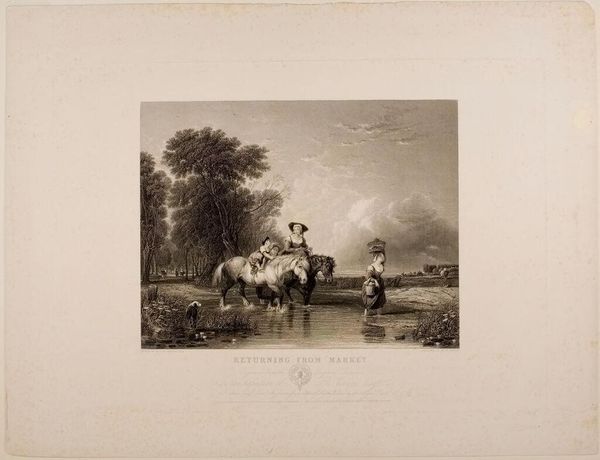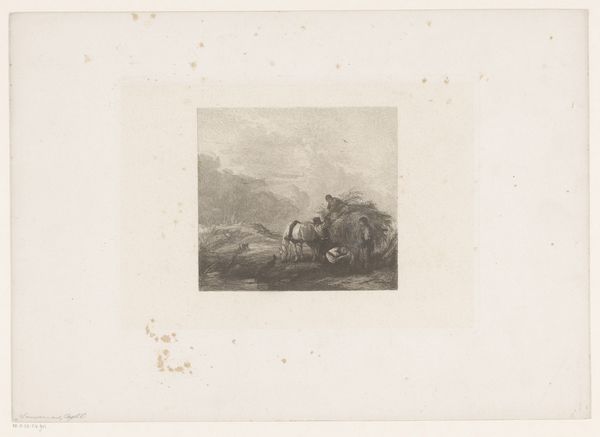
Dimensions: height 440 mm, width 586 mm
Copyright: Rijks Museum: Open Domain
Curator: Berglandschap met vier schapen, Mountain landscape with four sheep, an engraving by Robert Eberle dating back to the 1850s, evokes a feeling of peaceful isolation. I’m immediately drawn to the stark contrast between the dark, almost ominous, sky and the seemingly unbothered sheep in the foreground. What can you tell me about this piece? Editor: What strikes me is the contrast between the delicate engraving technique and the implied ruggedness of the landscape. Given your interest in materiality, how does the medium inform our understanding of this Romantic landscape? Curator: Excellent question. The *means* of production here, engraving, necessitates a controlled, repetitive labor. Consider the social context: the mid-19th century saw a rise in industrialized printing. This engraving, perhaps intended for mass consumption, presents an idealized view of nature, commodifying the romantic vision. The sharp lines and contrasting tones—achieved through skilled labor—are meant to evoke a powerful sense of drama. Do you think the choice of engraving diminishes the romantic feel, or amplifies it? Editor: I see what you mean about commodification of landscape through engraving. It makes me think about how consumer culture flattens or abstracts our experience of the environment. At first, I thought it added to it, but you're right, it calls to mind other works made to be mass-produced and easily consumed. It's interesting to consider. Curator: Indeed. Consider how the labor involved in creating this engraving reflects a broader social narrative. This wasn't painted *en plein air*, this wasn’t immediate, or raw. The art becomes this lens and record of how society consumed that world through imagery and creation of material work. Editor: That's a really fascinating take. Thanks for offering that context, and showing the labor involved in translating that moment! Curator: My pleasure. It highlights how material production shapes our understanding and the reach that art and imagery held.
Comments
No comments
Be the first to comment and join the conversation on the ultimate creative platform.
